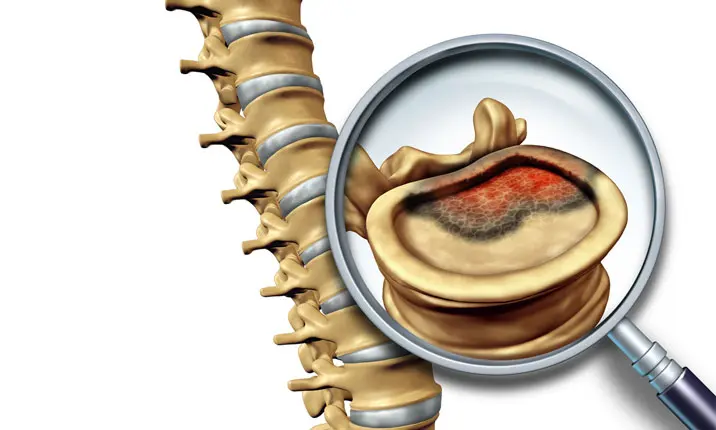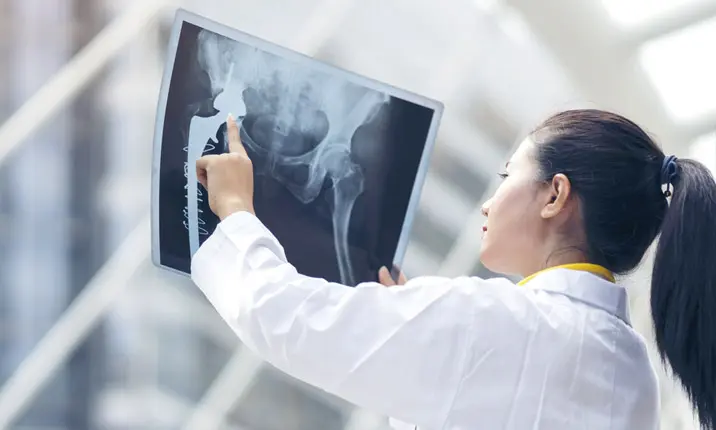What is bone cancer?
The body is made up of many tiny structures called cells. Throughout our lifetime, these cells continuously grow, divide, and make new cells to replace old and damaged cells. In a healthy person, the body is able to control the growth and division of cells according to the needs of the body. Bone cancer occurs when the cells in your body do not behave normally and multiply uncontrollably.
Bone cancer can affect people of all ages, and may originate in the bone, or spread from cancer in another area of your body. The formation of cancerous tumours in your bones is known as sarcoma or primary bone tumour. Cancer that develops from another area of your body and subsequently spreads to the bone is referred to as secondary bone cancer or bone metastases.
Symptoms of bone cancer
Paying attention to your body and potential symptoms is important in detecting bone cancer early. Unfortunately some people do not experience many, or any symptoms at all until much later. Some of the symptoms you should look out for include:
- Feeling a lump or swelling around a joint / bone
- Fever
- Joint pain / ache
- Redness on your skin
- Loss of appetite / unexplained weight loss
If you or any of your family members experience any of the above symptoms, it is very important to see a musculoskeletal oncologist. Dr Singh says, "Never be dismissive of the symptoms. What one may think is a simple joint pain could be something more serious."
Why early detection of bone cancer is vital
The last few decades have seen rapid advancements in the field of musculoskeletal oncology. In the past, a single orthopaedic surgeon would carry out all your treatment. Management of bone cancer is more effective today, and involves a multidisciplinary team of medical oncologists, general surgeons, reconstructive surgeons, radiologists, radiation oncologists, musculoskeletal pathologists, nurse practitioners and allied health professionals.
It is only possible to truly benefit from the expertise of all of these experts with early treatment. "If you find yourself or a loved one having any of the symptoms mentioned previously, it is not only important to go to a musculoskeletal oncologist, but to go early," urged Dr Singh. "If you were to go when the tumour has spread or grown out of control, this could result in an amputation of the limb or danger to the patient’s life."
Diagnostic tests for bone cancer
Diagnostic tests will help doctors to identify the location and size of the tumour, and whether it has spread to other parts of the body. These include:
X-ray
X-rays allow doctors to detect abnormal bone growth caused by cancer. It can also eliminate other possible causes of bone pain such as a fracture or other injury.
Computerised tomography (CT)
A CT scan compiles a series of X-ray images into a three-dimensional (3D) image, allowing doctors to see the extent of the cancer and if it has spread to the nearby organs.
Magnetic resonance imaging (MRI)
In an MRI, a strong magnetic field and radio waves produce clear images of the bones and soft tissues. It will show doctors the size and spread of the tumour.
Positron emission tomography (PET)
In a PET scan, a small amount of radioactive substance is combined with glucose for consumption. This scan demonstrates tumour metabolism as cancer cells are more active than normal cells and hence take up more glucose.
Bone scan
Abnormalities in bone metabolism of the entire skeleton can be detected by a bone scan, which uses a small amount of radioactive material to highlight abnormalities caused by the cancer.
Biopsy
A biopsy is performed to remove a small amount of tissue, which is sent for further analysis under the microscope. Often, this is done surgically by making a cut in the skin to gain access to the tumour. Sometimes, a needle biopsy (inserting a needle into the tumour to remove cells for further testing) might be sufficient.
Treatment of bone cancer
The primary aim of a musculoskeletal oncologist used to be simply in saving a patient’s life. Amputations were done frequently in order to remove bone tumours. "The advancements of better imaging technology, more effective chemotherapy, improved radiotherapy techniques, a better understanding of the human body, refinement in surgical techniques and advances in prosthesis design and materials have allowed function preserving alternatives to become more common," says Dr Singh. To put it simply, there are more ways to treat bone cancer without compromising the overall quality of the patient’s life, now that the possibility of having an amputation has vastly decreased.
Treatment options include:
Chemotherapy
Chemotherapy uses strong drugs to kill cancerous cells.
Targeted therapy
Targeted therapies are anticancer drugs designed to prevent the growth and spread of cancer cells.
Radiation therapy
Also known as radiotherapy, high doses of radiation are used to shrink the tumour before surgery and/or to kill the remaining cancer cells after surgery.
Surgery
Surgery is performed to remove the tumour completely. It is usually the mainstay of treatment. Advancements in surgical techniques often make it possible to avoid amputation (removal of the entire limb).
Limb salvage surgery
This approach combines cancer removal with limb-saving techniques. Biological (using bone harvested from the patient’s own body or cadaveric bone obtained from a bone bank) and/or non-biologic (implants / megaprostheses) reconstructive methods are used to reconstruct the bone defect.
Amputation of the limb
The removal of a limb is often considered the last resort.
Alternative treatments to amputation
"I recently treated a 12-year-old boy who came in with knee pains after a soccer game. He was found to have bone cancer around the knee, a rare tumour that affects 1 – 2% of the population." says Dr Singh.
"We were able to order a specially tailored allograft, a compatible bone obtained specially for the patient, from the USA. Simply put, this is a custom-made bone transplant. With the technological breakthroughs in recent years, we have reached a stage where we can transplant bone, an achievement that enables our patients to lead normal lives."
"This patient underwent a complex surgery and he is now back to school leading a normal life with his cancer cured," he added.
Bone Transplant
A bone transplant, also known as bone graft, aims to repair or rebuild bones that are weakened or damaged by tumours. Using bone from another part of the body, this procedure allows new bone to bond with your existing bone and to regrow. If the transplanted bone comes from another person, it is called an allograft.
Megaprosthesis
Dr Singh has also treated patients with the use of megaprosthesis, a highly complex joint replacement made from metal alloys. Megaprostheses are considered a reliable surgical option for the treatment of bone cancer that allows patients to retain the use of their limbs with good functionality.
Megaprosthesis is now considered a reliable surgical option for the treatment of bone cancer that allows patients to retain the use of their limbs, with good articulation and functionality.
Complication of bone cancer
If bone cancer spreads to other areas of the body, treatment options become limited. A multidisciplinary approach is often the best choice for disease control.
Complications of bone cancer can include:
Bone resorption / bone loss
Cancer can lead to bone resorption, a process known as osteolysis. This can weaken bones and increase the risk of breakage.
Pain
Pain is often the first symptom. It is usually worse at night but may become constant, or worsen during activity.
Fractures or broken bones
In some circumstances, the bone can become severely weakened and may break even during normal activity. This is more likely to occur in the long bones of the arms or legs, or the spine.
Urinary or bowel incontinence
Urinary or bowel incontinence may develop as the cancer spreads to other parts of the body such as the urinary or digestive system or to the muscles and nerves that control the bladder and bowel.
Weakness in the limbs
When cancer spreads to the spine or presses on nerves, this can result in feelings of numbness, tingling or weakness.
Hypercalcemia
Bone resorption can release high levels of calcium into the blood known as hypercalcemia. This can lead to nausea, vomiting, constipation, confusion, fatigue and kidney failure.
With the breakthroughs in musculoskeletal oncology in recent years, survival rates of bone cancer are expected to improve. However, you should stay proactive about your health and pay attention to your body. Always see a doctor if you experience pain or other symptoms. You can also help lower your risk of cancer by eating a balanced diet, cutting out smoking and alcohol, and getting plenty of exercise.















